Restoring Taharqa
This week we were able to start putting the north wing of the Taharqa Gate back together, restoring fallen blocks to their original position. We hope to finish the north wing next week and begin work on the south wing. As you look at this sequence of photos, remember that all the work is done by hand with little mechanical assistance.
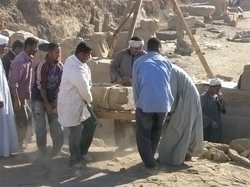
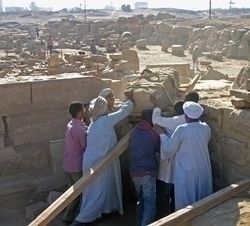
The block with the king’s legs was carefully lifted onto a “nagala” or litter and carried to the gate (left) – no easy task as you can tell. Using a baulk of wood as a rail, the block on its nagala was slid up to the top of the gate where it was offloaded, again very carefully.
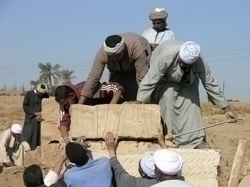
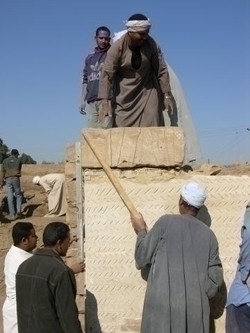
Once the block was in roughly the right place, the masons used a crowbar (padded to avoid damaging the block) and a wedge to move it the last few critical centimeters into its proper position (left). Khaled and Mohammed check that it is aligned with both faces of the gate while workmen stand by to do any final adjustments.
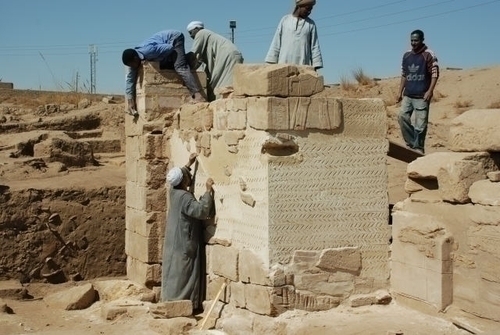
By the end of the day on February 3, the block was in place and the blank space to its right had been filled in; the block that once formed the right side of the scene is long gone. First thing Wednesday morning (February 4), we put back the second and last block preserved from this end of the gate and began work on the north face.
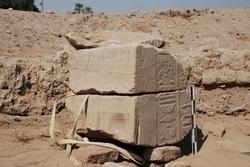
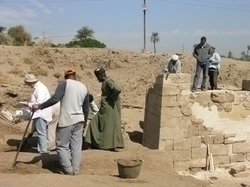
These two adjoining blocks come from the west end of the gate, the head of Amun (left) from the facade and the inscription from the jamb. The problem is that there is a gap between these two blocks and the gate’s existing top course. Once work on the east end of the gate was finished Wednesday, work began on replacing the missing row of stone. In the meantime, excavation continues west of the gate, with Elsie taking notes of the progress.
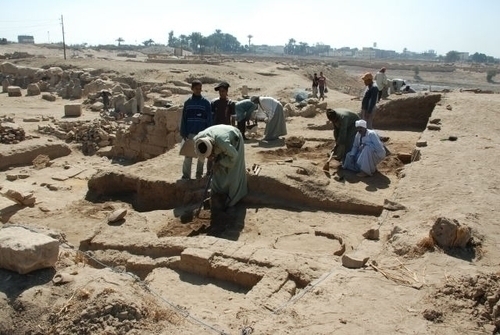
West of the gate, we are uncovering more walls in the northern part of the square, but in the southern section (background) we have yet to find any traces of walls or anything else.
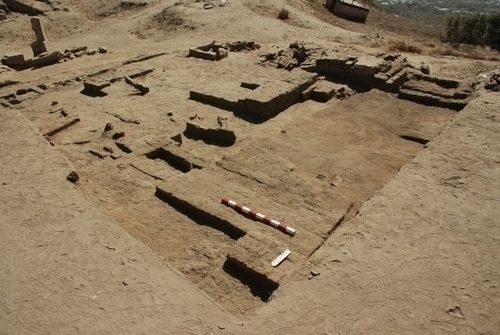
We expanded the southern square to the west this week and came on more mud brick, which is hardly surprising. To our pleasure, the brick walls are finally starting to make some sense, although that may be hard to believe from this picture. We are beginning to see connections between sections of walls.

North of the Mut Temple’s 1st Pylon the situation is still unclear. Left of the meter stick is the edge of a row of bricks at the lowest level reached yet. The thin brick wall running south from the kiln/furnace runs over this row, so at least we have a sequence of construction for this section. To the west, in the center of the photo, several more courses of brick have come to light, but as yet they don’t connect with any of the other brick features. Archaeology takes patience.
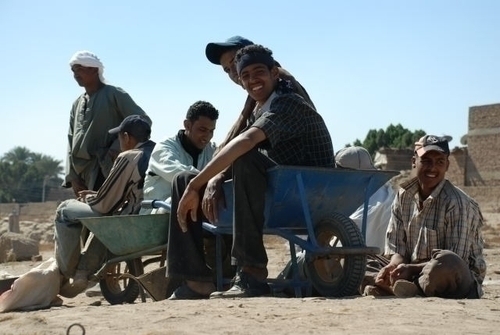
Wheelbarrows serve more than one purpose at Mut. In addition to being blank canvases for creativity (as we saw last week) and useful for hauling dirt, they also make comfortable seating for workmen idled during photography. These guys seem to be enjoying their rest.
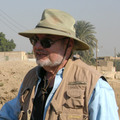
Richard Fazzini joined the museum as Assistant Curator of Egyptian Art in 1969 and served as the Chairman of Egyptian, Classical and Ancient Middle Eastern Art from 1983 until his retirement in June 2006. He is now Curator Emeritus of Egyptian Art, but continues to direct the Brooklyn Museum’s archaeological expedition to the Precinct of the Goddess Mut at South Karnak, a project he initiated in 1976. Richard was responsible for numerous gallery installations and special exhibitions during his 37 years at the museum. An Egyptologist specialized in art history and religious iconography, he has also developed an abiding interest in the West’s ongoing fascination with ancient Egypt, called Egyptomania. Well-published, he has lectured widely in the U.S. and abroad, and served as President of the American Research Center in Egypt, America’s foremost professional organization for Egyptologists.
